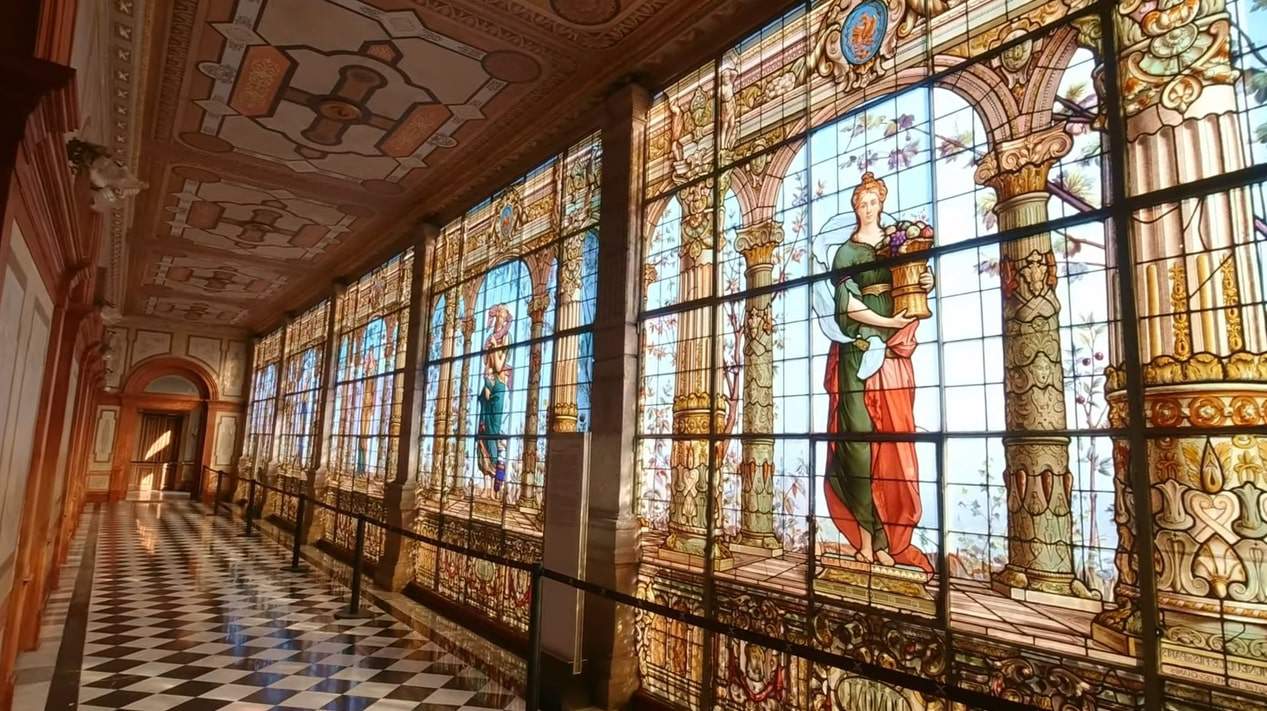After my first couple of days in Mexico City, I noticed that even exploring the streets was an activity in and of itself. Many historical places in Mexico City have become landmarks. From neoclassical buildings to contemporary murals, these are all worth taking a closer look at.
Whether you’re an art enthusiast like me, an architecture student, or just someone who appreciates beauty—these are the top landmarks to keep an eye out for.
13 Top Mexico City Landmarks
CDMX is a busy, bustling city. And I won’t say that all the Mexico City sights are landmarks.
There are plenty of things to see that aren’t permanent fixtures—like that abuela making flour tortillas in a small taquería. But the list below are the landmarks that I felt are worthy of prolonged admiration.
Chapultepec Castle
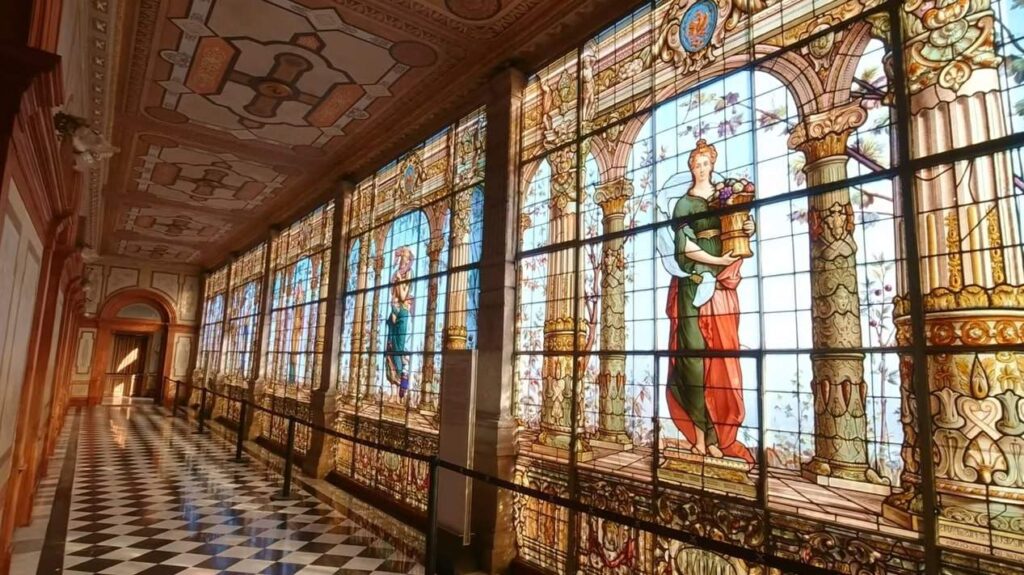
A royal residence built in the 18th century, this castle has seen a lot. It served as a presidential home for some time and even served as a military academy for part of its long history.
I appreciated the stunning neoclassical styles that intertwined well with the luxurious interior and breathtaking views of the city.
The castle also houses the National Museum of History, so I felt that my trip offered a richer experience of Mexican history.
Chapultepec is a symbol of Mexican sovereignty andI’d even go as fast as say it’s part of the national identity. If you want to truly understand Mexican history from pre-Columbian times to present, this is where you start.
El Angel
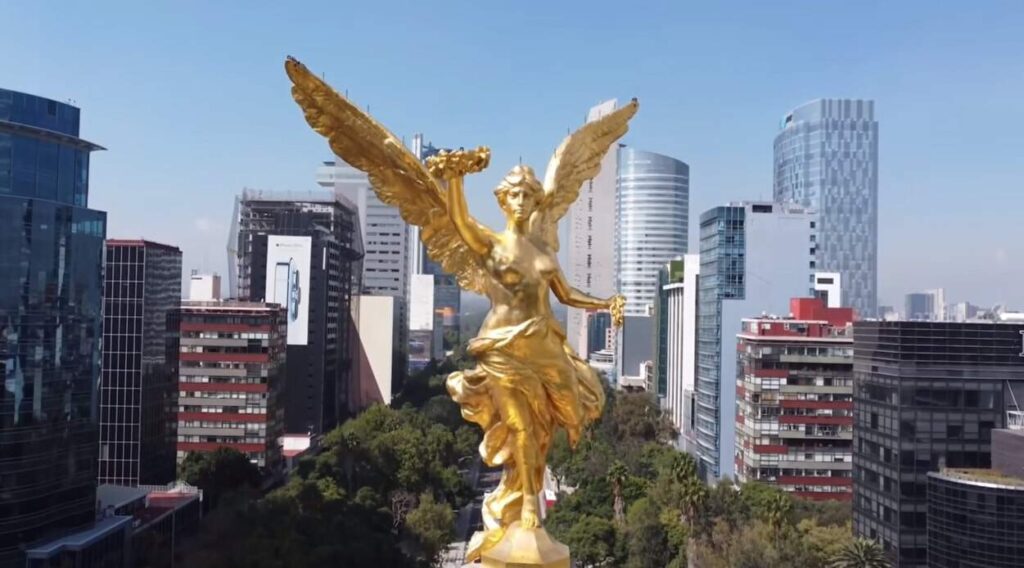
This is probably one of the most famous landmarks in Mexico City. El Angel, also known as “Ángel de la Independencia”, was built in the early 20th century to commemorate Mexico’s independence from Spain.
Easily recognizable as the victory column is topped by a Neoclassical-styled golden angel statue, it commemorates Mexican soldiers who died defending the country.
I’ve seen pictures of the statue before observing it in person, and I must say that the pictures don’t do it justice. Standing at 150 feet, the Greek Goddess Nike overlooks the city in pristine gold.
Visiting this landmark is a great activity for tourists too. When I visited, there were a variety of cultural events and celebrations planned and I had a lot of fun. I enjoyed the monument’s grandeur and the vibrant atmosphere around it during the festivities.
El Zócalo
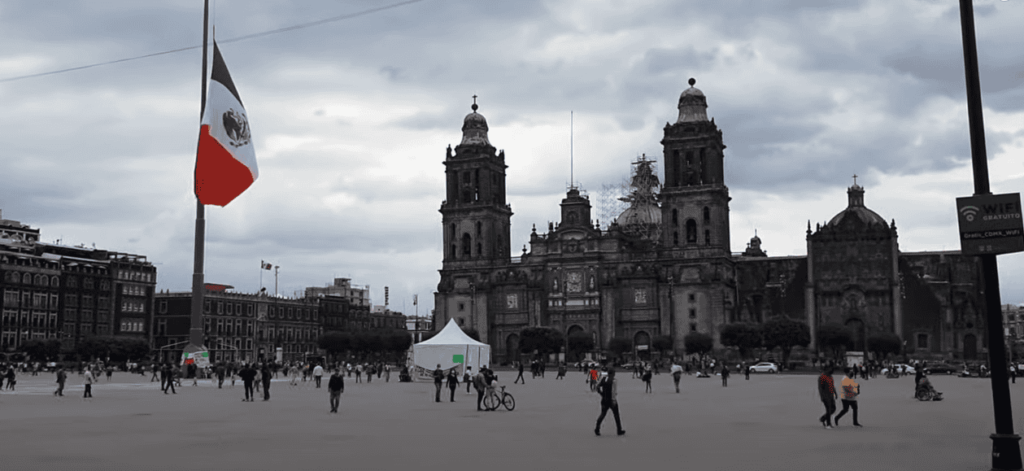
Moving on to the heart of the Aztec capital Tenochtitlan, this landmark is currently in CDMX’s main square. El Zocalo features grand colonial architecture, which strongly reflects Mexico’s Spanish heritage.
The historical significance of this spot makes it a must-visit for anyone sightseeing in Mexico City. The square features significant landmarks, and it showcases the country’s pre-Hispanic and colonial roots.
To this day, it’s a central gathering place, and I highly suggest visiting El Zocalo during national events or celebrations. The vibrant atmosphere is something you don’t want to miss!
Palacio Nacional
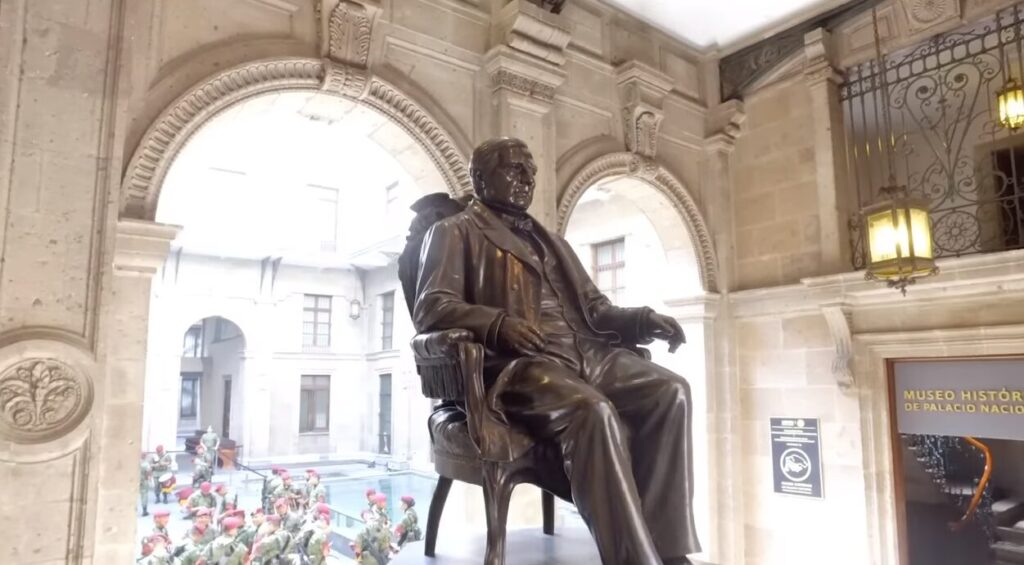
While I was at Zocalo, I was fascinated by the National Palace. It was built in the 16th century on the former Aztec site of Moctezuma II’s palace. If that doesn’t represent the country’s rich history, I don’t know what does.
The palace has Spanish Baroque architecture, featuring a large central courtyard that I felt truly adds to its grandeur. Even more stunning are the iconic murals all over the palace walls—courtesy of the renowned Diego Rivera. The murals depict Mexican history in unique ways.
I highly recommend that you go for the public tours—you’ll learn a lot about the palace’s history and fascinating art. The palace is also a stage for national events.
Metropolitan Cathedral
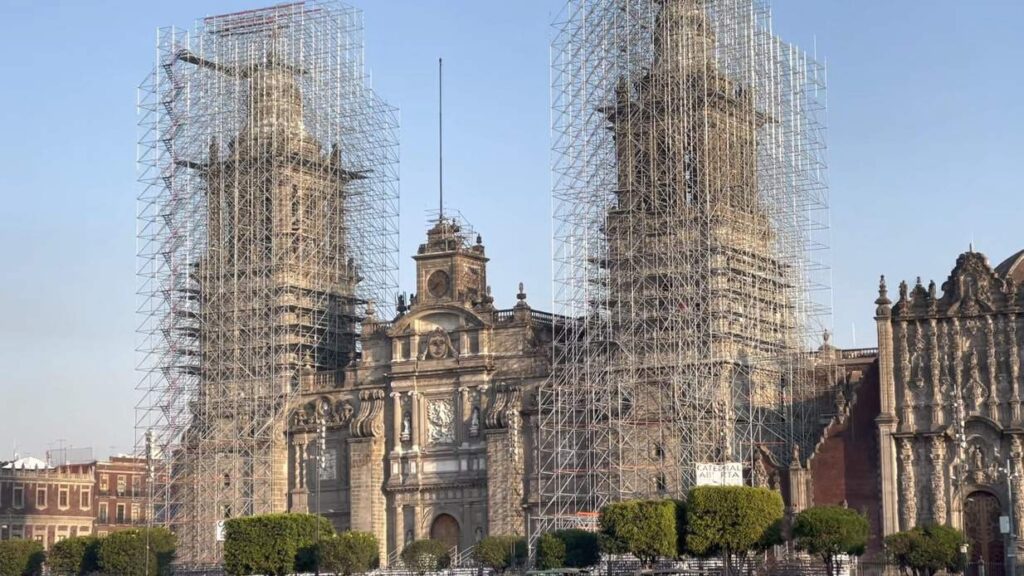
Another part of the infamous El Zocalo, The Metropolitan Cathedral is the largest cathedral in Latin America. Its marvelous architecture and historical significance are hard to pass up. Construction of this beautiful cathedral spanned over 250 years, so you can see the blend of architectural styles. Different parts of the cathedral showcase Baroque, Neoclassical, and Plateresque elements.
The cathedral’s imposing presence is further enhanced by its role as the resting place for numerous Mexican heroes and archbishops, adding a layer of reverence to its already impressive structure.
I was struck by its sheer size and architectural beauty. The intricate details carved into its stone walls, the grandeur of its towering spires reaching towards the sky—all of it spoke volumes about the history and faith that shaped this magnificent structure.
Monumento de la Revolución
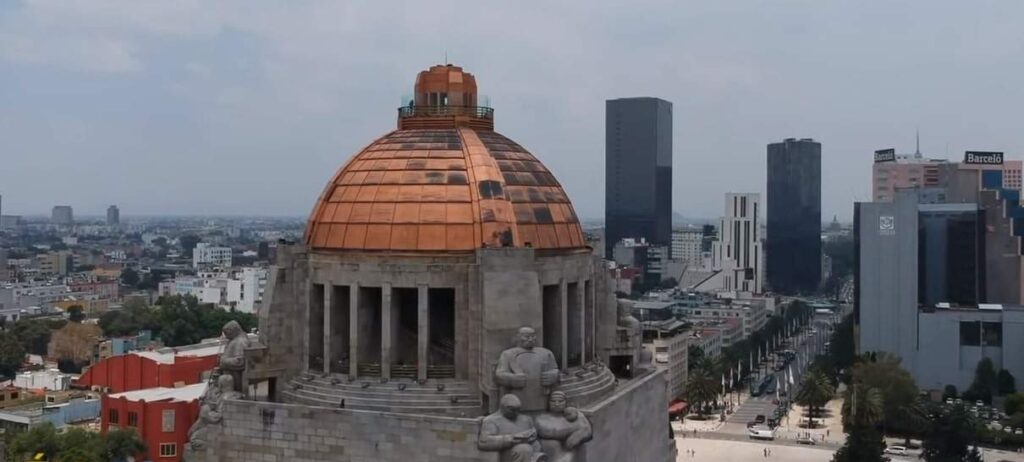
This is one of the most famous monuments in Mexico, and it’s a striking symbol of the country’s revolutionary heritage. Construction of this captivating monument began in the early 20th century but was halted due to the Mexican Revolution, giving it a unique historical context.
That’s why I was not surprised to see the blending of various architectural styles. I could spot Neoclassical elements as well as Art Deco. It’s a massive dome with intricate detailing that you can’t miss in CDMX’s skyline.
The monument serves as a reminder of the country’s struggles for independence and social justice, attracting visitors who seek to understand Mexico’s complex history.
The monument also houses a museum that delves into the revolution’s key events and figures, offering a deeper insight into this pivotal period in Mexican history.
Basilica of Our Lady of Guadalupe
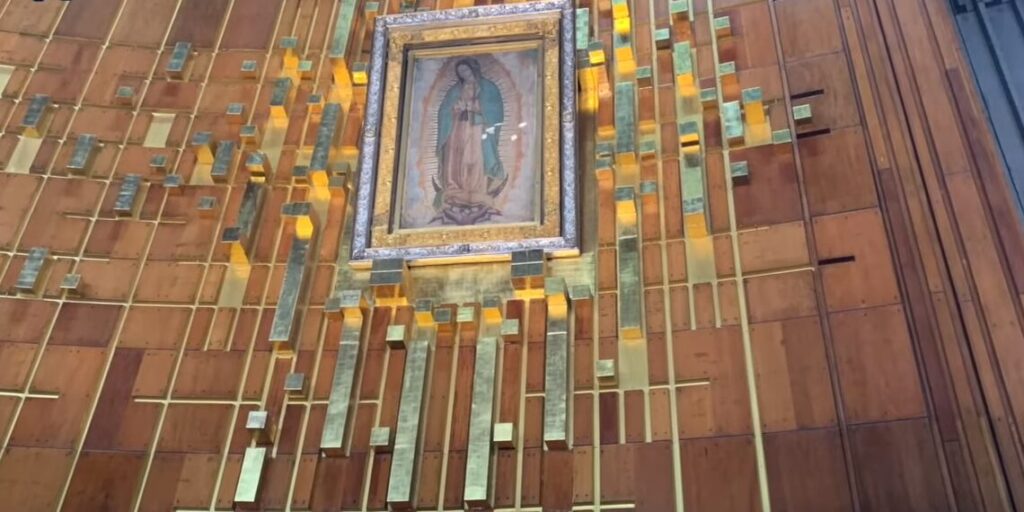
This is one of Mexico’s most revered religious sites, and no sightseeing tour of CDMX would be complete without a stop here. The Basilica was built upon the miraculous appearance of the Virgin Mary to Juan Diego in 1531.
Over the centuries, the basilica has undergone several reconstructions, with the current structure completed in the 1970s. Its architectural style blends modern elements with traditional Mexican design, featuring vibrant colors, intricate details, and symbolic imagery that pay homage to the Virgin of Guadalupe.
The basilica holds immense cultural and spiritual significance for Mexicans and Catholics worldwide. Millions of pilgrims visit each year to pay homage, seek blessings, and experience the deep spiritual connection associated with this sacred site.
As I explored the basilica’s grounds and learned about its history, I gained a newfound appreciation for the enduring faith and cultural heritage that the Virgin of Guadalupe represents.
Torre Latinoamericana
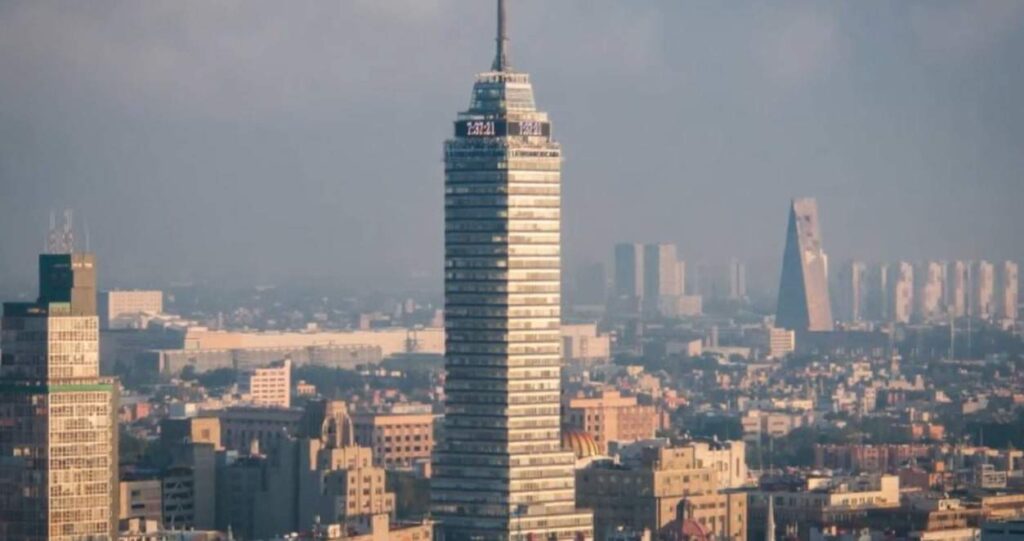
Also known as the Latin American Tower, this iconic skyscraper that has been part of Mexico City’s skyline for over half a century. It was designed by architect Augusto H. Álvarez, and was completed in 1956. A friend of mine told me that it was once the tallest building in Latin America!
The tower’s construction marked a significant milestone in Mexico’s architectural and engineering prowess.
To be specific, it is one of the first buildings in the world to use a harmonic absorber—the technology that allows buildings to counteract earthquakes.
Beyond its architectural achievements, the Torre Latinoamericana has become a symbol of Mexico City’s resilience and modernity. Surviving multiple earthquakes, including the devastating 1985 earthquake, it stands as a testament to engineering ingenuity.
The tower houses observation decks, restaurants, offices, and a museum, making it a multifunctional space that attracts locals and tourists alike.
Paseo de la Reforma
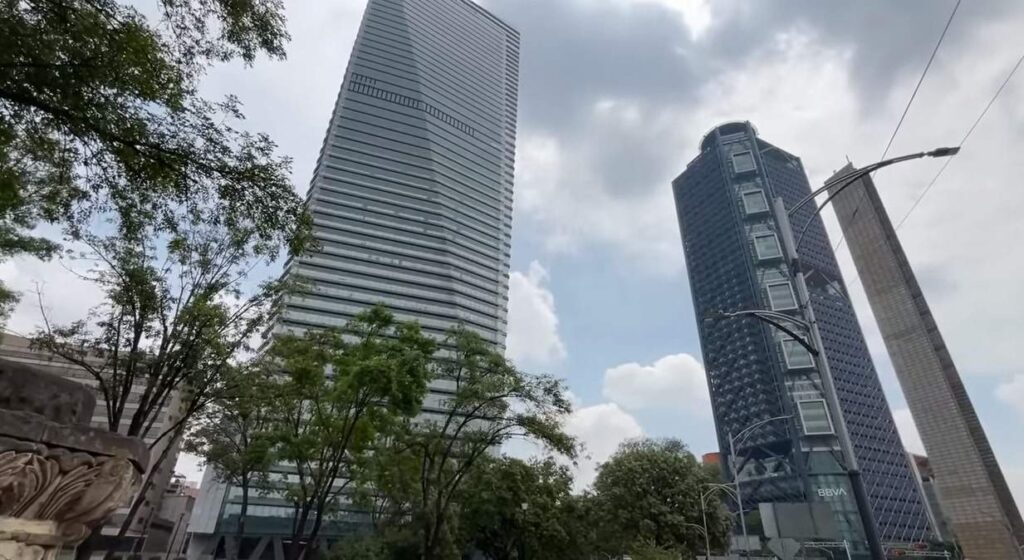
The Greek Goddess I mentioned earlier overlooks one of Mexico City’s most famous boulevards, renowned for its historical significance and architectural splendor. Paseo de la Reforma was originally designed in the 19th century by Emperor Maximilian I of Mexico to emulate the grand boulevards of Europe,
The avenue is lined with iconic landmarks, statues, fountains, and modern skyscrapers. If you don’t have a lot of time for sightseeing in CDMX, this is where I’d recommend you go. Its wide avenues and tree-lined sidewalks provide a picturesque backdrop for strolls and cultural exploration.
I was captivated by its blend of historical charm and modern vibrancy. Landmarks within this avenue such as the Diana the Huntress Fountain are tough to miss, and very remarkable.
The bustling energy of the street, with its mix of locals, tourists, and businesspeople, creates a lively and dynamic atmosphere that is uniquely Mexico City.
Benito Juárez Hemicycle
The Benito Juárez Hemicycle is a monumental structure located in Mexico City’s Alameda Central park, dedicated to the memory of Benito Juárez, a prominent Mexican president and national hero.
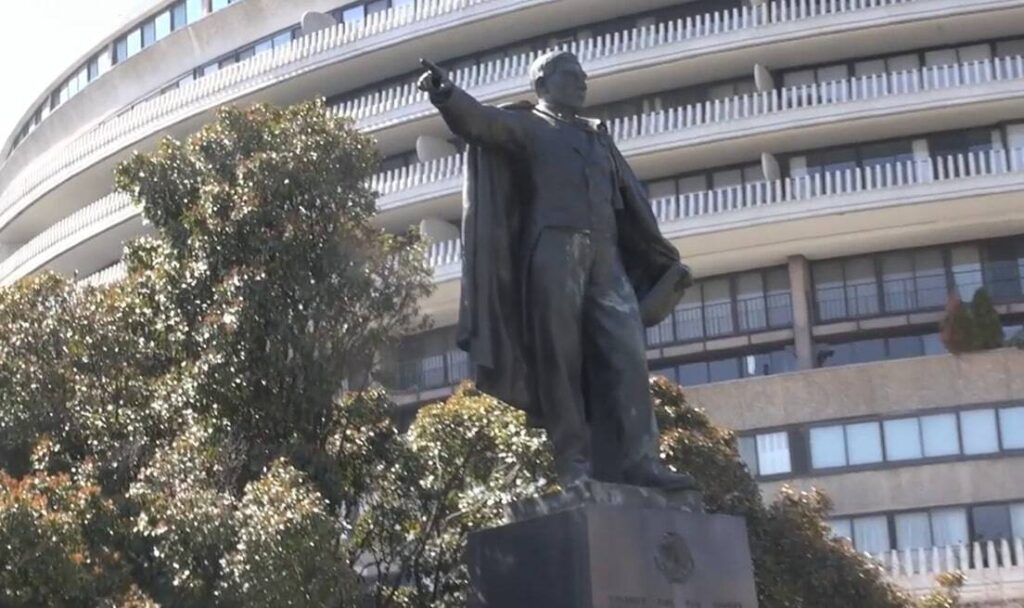
Designed by architect Guillermo Heredia, the hemicycle was inaugurated in 1910 to commemorate the centennial of Mexico’s independence. Its neoclassical design features a semicircular colonnade adorned with statues and inscriptions honoring Juárez’s legacy and contributions to Mexico.
Juárez’s role in promoting liberal reforms, defending national sovereignty, and championing the rights of indigenous peoples earned him admiration and respect throughout Mexico.
The hemicycle serves as a gathering place for public events, political rallies, and ceremonies, reflecting Juárez’s enduring influence on Mexican society.
The statues depicting Juárez and the inscriptions celebrating his ideals resonated with me, highlighting his commitment to justice, equality, and democratic values.
Ciudad Universitaria
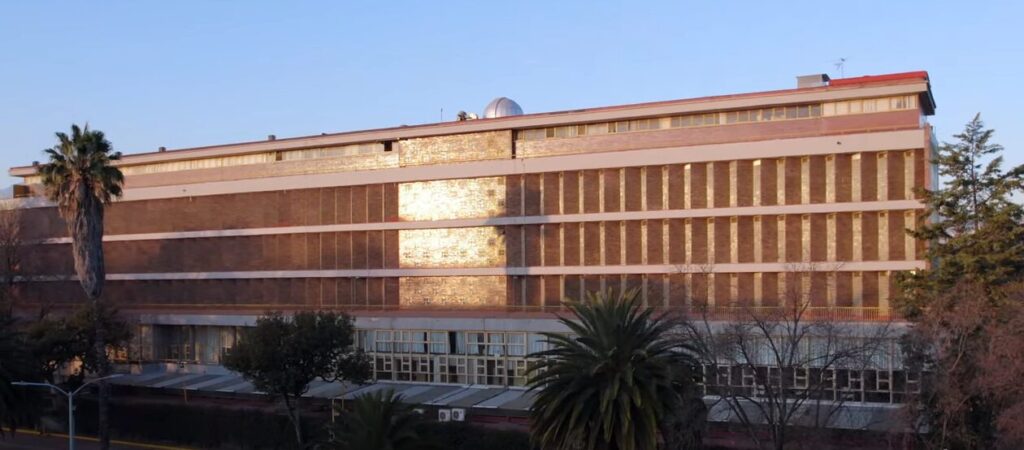
This is the main campus of the National Autonomous University of Mexico (UNAM) and is renowned for its architectural and cultural significance. It is recognized as a UNESCO World Heritage Site for its outstanding architectural and urban design.
Designed by a team of prominent architects led by Mario Pani and Enrique del Moral, construction of the campus began in the 1950s and was completed in the 1970s.
The architecture is characterized by modernist and functionalist principles, with striking features such as the Central Library, the Olympic Stadium, and the iconic mosaic murals by artists like Diego Rivera and David Alfaro Siqueiros.
Exploring Ciudad Universitaria was a journey through Mexico’s intellectual and artistic legacy. The harmonious blend of modernist architecture, lush green spaces, and vibrant cultural scene created a dynamic and inspiring environment.
I appreciated the striking geometric design of the Central Library, and truly enjoyed exploring the wide collection of books and manuscripts it houses.
Museo Frida Kahlo
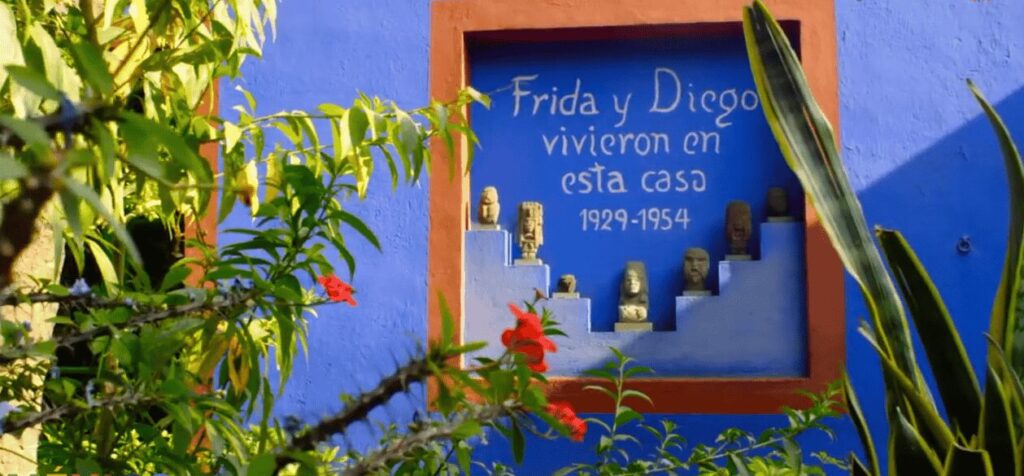
While there are many galleries in the city, many art enthusiasts’ first stop is Caza Azul. The Frida Kahla Museum is the iconic cobalt blue home that the famous painter once called home.
Located in Coyoacán, Mexico City, the museum showcases a collection of her artworks, personal belongings, and memorabilia.
Casa Azul’s architecture reflects traditional Mexican style, with vibrant blue walls, lush gardens, and decorative elements that offer insights into Kahlo’s artistic inspirations and cultural heritage.
The Museo Frida Kahlo is a pilgrimage site for art enthusiasts, feminists, and admirers of Kahlo’s unique artistic vision. It provides a glimpse into Kahlo’s life, struggles, and creativity, allowing visitors to connect with her art on a personal level.
The museum’s exhibitions, including Kahlo’s paintings, photographs, clothing, and letters, offer a comprehensive view of her artistic evolution and impact on Mexican and global art history.
Walking through the rooms where Kahlo lived and worked, surrounded by her paintings and personal artifacts, felt like stepping into her world. This museum is a tribute to a visionary artist whose legacy continues to inspire and resonate with audiences worldwide.
Cineteca Nacional
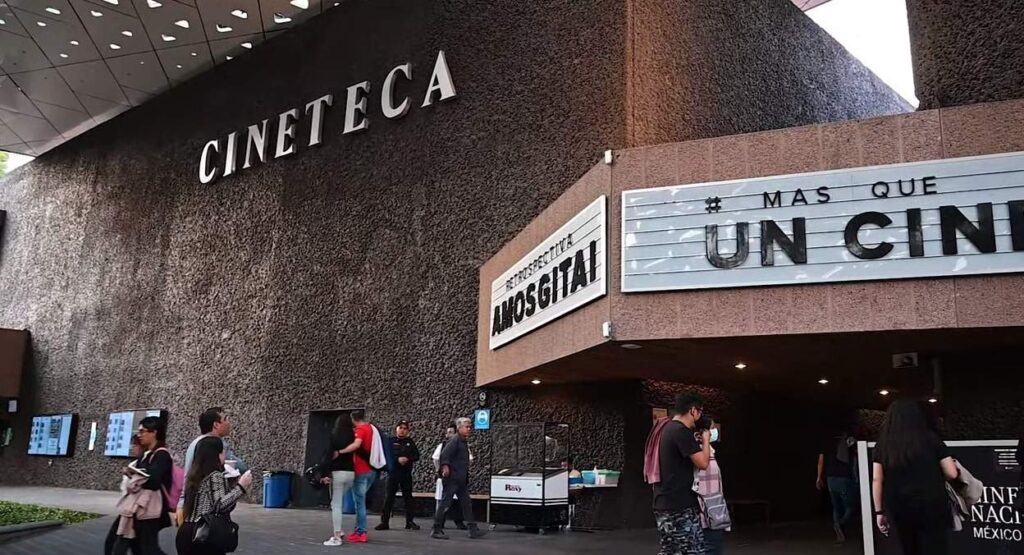
Cineteca Nacional is Mexico’s national film archive and cultural center, dedicated to preserving and promoting the country’s cinematic heritage.
Originally founded in 1974, the current Cineteca Nacional complex was inaugurated in 1984 and underwent significant renovations in the early 21st century.
The architecture of Cineteca Nacional blends modernist and industrial elements, with exposed concrete structures, large glass facades, and open-air spaces that create a unique and inviting atmosphere for film enthusiasts and visitors.
As a hub for film screenings, festivals, exhibitions, and educational programs, Cineteca Nacional plays a crucial role in celebrating Mexico’s rich cinematic traditions and fostering a vibrant film culture.
The archive houses a vast collection of Mexican and international films, including classics, documentaries, and contemporary works, making it a valuable resource for researchers, filmmakers, and cinephiles.
Exploring Cineteca Nacional was a cinematic journey through Mexico’s diverse film history and creative expressions.
The screenings of classic Mexican films, international retrospectives, and avant-garde cinema showed me the depth and breadth of cinematic artistry.
Final Thoughts
Exploring the wide variety of landmarks in Mexico City helped me appreciate the rich tapestry of history, art, and culture that the city has to offer. From vibrant streets to iconic landmarks, each corner of this city seems to have a new story to tell me. I hope you enjoy these landmarks as much as I did!

